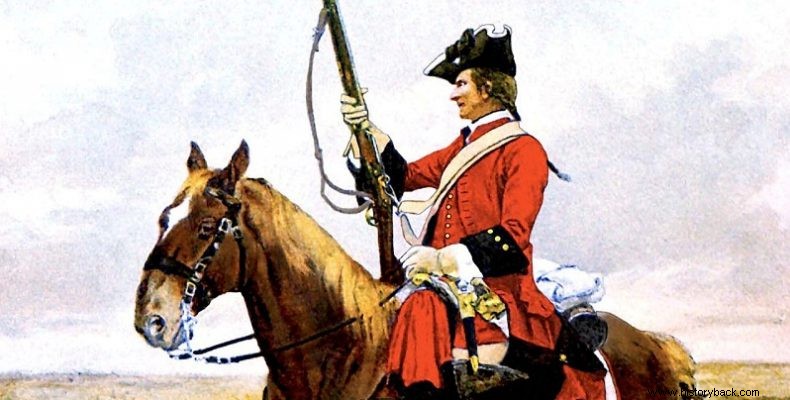
The 3rd Dragoon Regiment of the Austrian Army was one of its oldest units. It was formed in 1682, in view of the new Turkish invasion. In 1684, the famous Eugene, Prince of Savoy, took over its administration, forever linking the regiment with their name. The regiment was formed in 1682 and its first commander and "owner" was Colonel Johann Heinrich Count of Kufstein Gilstein.
According to the practice of the time, a noble was charged with the formation and maintenance of an infantry or cavalry regiment by the emperor, just as the trierarchs (the sponsors of the triremes) did in ancient Athens. The regiment took part in the battle of Vienna, in 1683, where the Turks were defeated and the Austrian capital was saved. A young prince, with the rank of captain, Prince Eugene of Savoy, also fought in his ranks. At that time dragoons were still, more, mounted infantry than cavalry. They fought mostly on foot, using their horses for greater agility. It was, so to speak, the motorized infantry of the time.
In 1684, Eugene became its commander. In the same year the regiment fought in the Battle of Offen and the following year in the Battle of Gran. He participated in the campaign of the Imperial Army in Hungary and was present at the second battle of Mohács, where he distinguished himself, fighting heroically, from his commander to his trumpeters, against the Turks. The regiment was originally ordered to remain in reserve. But Eugene and his men did not tolerate it. They rushed against the Turks, on horseback. The attack was even led by the trumpeter Zinzendorf, who was wounded twice, but continued to trumpet the raid, until he collapsed from his wounds and later died.
At the siege of Belgrade in 1688, the regiment attacked on foot, led by Eugene, sword in hand, and was one of the first units to break through the Turkish defenses and enter the city. With the French invasion of Germany in 1688-89, the regiment was transferred to the Rhine front. In 1691 he was transferred to Italy, where he took part in the battles of Turin and Marsalia. He remained on the Italian front and in 1695 participated in the siege of Cassala.
With the start of the new Austro-Turkish war, the regiment was transferred to Hungary and took part in the battle of Zenda, in 1697, with Prince Eugene now commander-in-chief of the Imperial Army, but spending many hours among his old comrades-in-arms. In the War of the Spanish Succession (1700-1715) the regiment was again sent to the Italian front. He distinguished himself in all undertakings. In a reconnaissance in fact, two companies, under the command of Colonel Count Rocavione, surprised a French detachment and captured a large number of prisoners.
The regiment continued to distinguish itself in petty warfare operations in northern Italy, causing considerable bleeding to the French Army. In 1702 he took part in the deadly battle of Luzara, where he distinguished himself, repelling the attack of the elite French carabinieri, but also two elite Irish regiments of the French Army, securing the Austrian left flank. The regiment continued to fight heroically on the Italian front until 1708, when it was transferred to Hungary to fight against the French-funded Hungarian rebels. He was also present at the catalytic conflicts in Hungary, the battles of Fandekert and Eipel, which put an end to the rebellion. He was then transferred to the Rhine and took part in the battle of Denai in 1712.
In 1716 he returned to the Turkish front and took part in the siege of Tamesvar (Timisoara) and in 1717 he particularly distinguished himself in the new siege and battle of Belgrade. In the battle, especially the regiment suffered great losses but did not retreat even a single bit. The regiment was organized, until 1700, in 10 companies, which increased to 12. Two companies formed a platoon, which was also the basic reference subunit. Each company originally numbered about 100 men, but later its strength was reduced to 80. Thus the regular strength was about 960 men, not including his colonel's small staff and auxiliaries.
Each company was commanded by a captain, assisted by a lieutenant and a second lieutenant. Also each company had a sergeant, four corporals, a quartermaster officer, a messenger, a doctor, a drummer, a horseman and a blacksmith. The men carried a short-barreled musket (carbine), a bayonet and a sword. Later their sword was replaced by cavalry swords and the bayonet was removed as their role changed from mounted infantry to medium cavalry. The regiment continued to fight until 1918.

